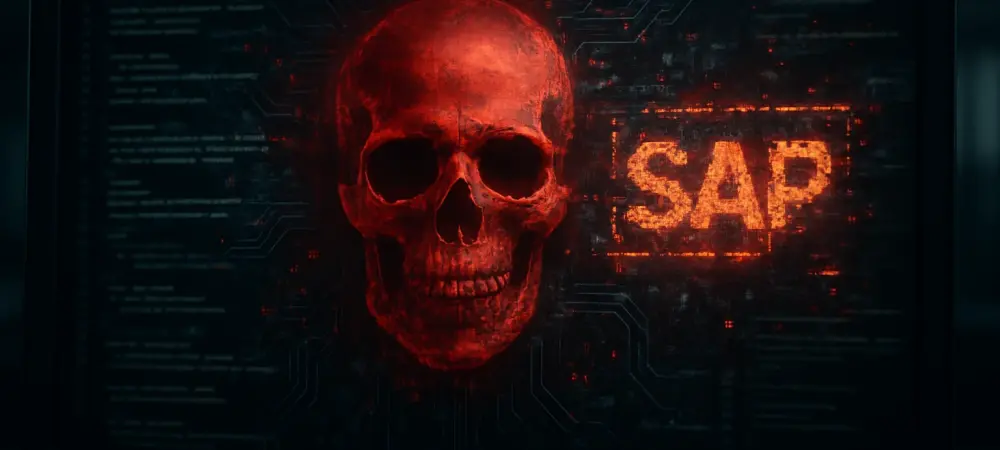In an era where enterprise software underpins the operations of countless organizations worldwide, the emergence of sophisticated cyber threats targeting these systems has become a pressing concern for businesses everywhere. A recently uncovered malware campaign, dubbed Auto-Color, has sent shockwaves through the cybersecurity community by exploiting a critical flaw in SAP NetWeaver, a platform integral to many companies. This campaign, detected by advanced security researchers, showcases the alarming speed at which attackers weaponize disclosed vulnerabilities, turning them into powerful tools for system compromise. With Linux environments as the primary target, Auto-Color represents a multi-stage attack that bypasses traditional defenses, posing a significant risk to industries reliant on SAP solutions. As this threat unfolds, it underscores the urgent need for organizations to reevaluate their security postures and prioritize proactive measures against such evolving dangers.
Unveiling the Threat Landscape
Emergence of a Critical SAP Flaw
The foundation of the Auto-Color malware campaign lies in the exploitation of a severe vulnerability in SAP NetWeaver, specifically within the Visual Composer Metadata Uploader component. Identified as CVE-2025-31324, this flaw allows attackers to perform remote file uploads without authentication, potentially leading to full system compromise. Disclosed by SAP earlier this year, the vulnerability was quickly weaponized, with a notable incident targeting a US-based chemicals company just days after the announcement. The attack began with a malicious ZIP file delivered through a URI, paving the way for the deployment of Auto-Color via an ELF file retrieved from a remote server. Security tools detected early indicators of compromise, such as unusual DNS tunneling and suspicious inbound connections, which were critical in identifying the threat before it could fully execute. This rapid exploitation highlights how attackers are constantly scanning for newly disclosed flaws to gain unauthorized access to critical systems.
Mechanics of a Sophisticated Attack
Auto-Color operates as a Remote Access Trojan (RAT), demonstrating remarkable adaptability based on the privileges it acquires upon execution. When run with root access, the malware employs advanced persistence techniques by installing a disguised shared object library, masking its presence through clever naming conventions in system log directories. It establishes encrypted outbound connections to a hardcoded command-and-control (C2) server using TLS, ensuring stealthy communication with its operators. However, if the server remains unreachable, Auto-Color enters a dormant state to avoid detection in sandboxed or offline environments. Its capabilities include executing commands, launching reverse shells, and even self-terminating through a built-in kill switch, making it a versatile and dangerous tool. The malware’s ability to adapt its behavior based on system conditions reveals a level of sophistication that challenges conventional security measures and demands more dynamic defense strategies.
Strengthening Defenses Against Evolving Threats
Insights from Cybersecurity Experts
The severity of the Auto-Color campaign has prompted urgent warnings from cybersecurity experts across the industry. The exploitation of CVE-2025-31324 in active attacks serves as a stark reminder of the risks posed by unpatched vulnerabilities in enterprise software. Specialists emphasize that this incident marks one of the first documented cases of such a flaw being used to deploy a RAT on Linux hosts, underscoring the need for heightened vigilance. The creative methods employed by attackers to advance along the cyber kill chain demonstrate a growing trend of leveraging known issues with devastating effectiveness. Experts advocate for integrating SAP security into broader IT operations, as traditional teams managing these systems often lack the expertise to counter advanced threats. Collaboration between SAP specialists, IT operations, and security units is deemed essential to build a robust defense against such persistent and adaptive malware campaigns.
Building a Unified Security Strategy
Addressing the challenges posed by Auto-Color requires a fundamental shift in how organizations approach cybersecurity for critical platforms like SAP. The gap between specialized teams and general IT security must be bridged to create a cohesive strategy that encompasses timely patching, proactive threat detection, and autonomous response mechanisms. The incident involving Auto-Color revealed the value of advanced detection tools that can identify and block malicious activities, such as outbound connections to C2 infrastructure, before significant damage occurs. Beyond technology, fostering a culture of collaboration across departments ensures that vulnerabilities are addressed holistically rather than in isolation. As cyber threats continue to evolve with alarming speed, organizations must invest in continuous monitoring and training to stay ahead of attackers who exploit even the smallest window of opportunity. This unified approach proved critical in mitigating past attacks and remains the cornerstone of future resilience.

